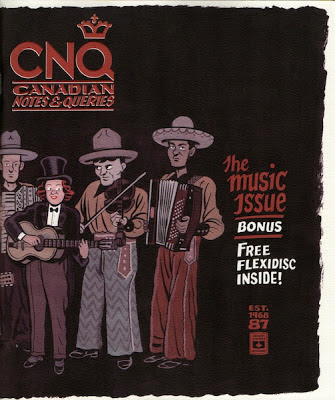A Dum-Dum for the President
Martin Brett [pseud. Douglas Sanderson]
London: Hammond, 1961
Depending on how you want to look at it,
A Dum-Dum for the President is the third or fourth Mike Garfin mystery. Either way, it's an unexpected return. The last we saw of the private investigator was in
The Darker Traffic (1954), though a fairly strong case can be made that he reappears as "Bill Yates" in
The Deadly Dames (1956). In the years since, it seemed that Sanderson had not only left Garfin, but his beloved Montreal behind. The city that provides the setting for five of the novelist's first seven novels, receives not so much as a mention in the nine that followed.
Nine novels, five years, and no Montreal... then came
A Dum-Dum for the President. It has all the elements of a typical Mike Garfin novel: a hot female, a high body count and more than a few digs at the city's wealthiest. As in the dick's previous adventures, there is a stench of homophobia, tempered somewhat by Garfin's man crush:
He was middle aged, medium eight, broad as an ox and had hands like a stevedore. One finger wore a conspicuous gold ring in the shape of a South American Indian head that must have weighed a quarter of a pound but on him did not look flashy. Patent slippers, good quality trousers, a white silk stock at his neck, a blue-silk dressing gown with the monogram M.B. on the breast pocket. His eyes were the color of chestnut peel. There was no trace of grey in his curly black hair. He was powerful in every sense of the word and damn near overwhelmed me.
This man, who Garfin tells us "radiated power like heat coming from an open furnace", is Manuel Bordera. A deposed Latin American dictator, he hides under an assumed name in a Mount Royal mansion, planning his next
coup d'état. Such is the crush that Garfin all too readily sides with loyalists who counter that the stories of torture, murder and corruption are nothing but lies. Before you judge our dick, consider those chestnut peel-coloured irises:
His eyes glowed warm with buddy-buddy friendship. It was like undergoing invisible heat. I almost spread my arms and burst into blossom.
A Dum-Dum for the President is no love that dare not speak its name story. The relationship between dick and dictator is purely professional, with Bordera hiring our hero to hold a key that may or may not free $100 million. The first hint that things are beginning to go awry comes when Garfin arrives home to find the cops looking over a corpse in the nearby alleyway. My own detective work places the dead man a block or so from Chalet Bar-B-Q.
There's violence. Unpleasantness, such unpleasantness. Sentences are short. Talk is cheap. Longer passages bring things like this:
He was on his back. I knelt before him. Fat flakes of snow drifted down between the trees and melted on his face. His head was to one side. His mouth gaped in idiocy. The porcelain caps had been shattered by a smack in the face and the grinning tooth-stumps made him look like a circus clown playing a joke.
Une image forte, it's one of many in what becomes an increasingly fast-paced and messy investigation. The final scene brings clarity from chaos, and features some of Sanderson's very best writing. Any disappointment comes from the sad fact that Garfin's girlfriend Tessie, the best character in the series, is gone. The last we see of the private investigator he's alone, walking in the snow toward a cabin outside Mont Tremblant. It's a sad, yet appropriate end to not only Garfin but Montreal's post-war noir.
The Wisdom of Mike Garfin:
The man tired of a Canadian autumn is tired of life.
Object: The cover image above belongs to the 1961 Hammond first edition. As is so often the case, the scene depicted does not take place in the book.
Published 45 years later, my copy of the novel – a Stark House Mystery Classic – comes coupled with
The Deadly Dames. It features an Introduction by
Kevin Burton Smith, and an interview with the late author.
Access: It's been years since I've seen a copy of the Hammond edition offered online. While the Stark House edition is happily in print, there is no Canadian distributor. I bought my copy down south.
If WorldCat is anything to go by, only one Canadian library – the Robarts at the University of Toronto – has the first edition. All our libraries fail when it comes to the Stark House edition. Bibliothèques de Montréal take note.
A French translation,
Estocade au Canada, was published in 1961 by Gallimard. There's not a copy to be found in any Canadian library.
Related posts:


























